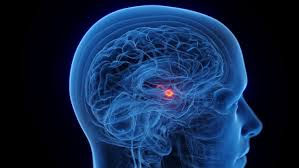Why Temperament is the focus of TBT-S
- support528742
- Jun 8, 2024
- 2 min read
The Nature of Temperament
Temperament is the biological foundation of personality—innate features, including genetic and neurobiological factors, that influence thoughts, feelings, and behaviors throughout life. These traits are generally stable across a lifetime and present from early childhood. However, their expression can change with exposure to different external factors, manifesting in both productive and destructive ways due to the interplay between genes and the environment. While the environment shapes the expression of these traits, it cannot create or eliminate them.
Common Traits Linked to Eating Disorders
Research has shown that certain traits common in childhood may predispose individuals to developing eating disorders like anorexia nervosa (AN). Some of these traits include:
Perfectionism
Achievement orientation
Obsessionality
Sensitivity to criticism, punishment, and errors
Altered sensitivity to reward
Anxiety and anticipatory anxiety
High harm avoidance
Difficulty with set-shifting and decision-making
Impulsivity and emotional dysregulation *These are only some of the traits out of about 54 that the research has determined are commonly linked to eating disorders
Productive vs. Destructive Expression
Productive expressions are helpful or enhance oneself or interpersonal interactions, serving as tools that can lead to eating disorder (ED) recovery.
Destructive expressions are detrimental or harmful to oneself or others, acting as triggers that perpetuate harmful ED behaviors.
TBT-S: Treating to the Trait
Unlike several other treatment modalities, TBT-S focuses on treating the illness from the inside out rather than simply trying to eliminate external ED symptoms and behaviors. TBT-S believes that traits are innate, will never be eliminated, and ultimately influence behavior and symptoms. Therefore, TBT-S sees traits as strengths and weaknesses, working with clients to shift the expression of traits to be more productive, using them as internal tools to achieve recovery.
Understanding temperament allows eating disorders to be framed within their biological structure, recognizing that recovery may look different for each individual. Thus, TBT-S helps clients identify their traits, understand how they are currently being expressed, and determine whether these traits need to be shifted to achieve their goals better. One of the TBT-S resources is a toolbox that harnesses a client's most apparent productive traits, using them to their advantage in recovery as they face daily obstacles. For example, a client who uses their determination primarily to complete planned tasks can leverage this trait in recovery by creating lists and implementing tasks during high-stress or anxiety situations. Recognizing that moments of destructive expression will inevitably arise, TBT-S emphasizes the importance of relying on these traits that already work in the client's favor. In this example, the goal is for the client to recognize their inherent determination as an internal tool that can support them when other traits are working against them. As recovery progresses, the focus can shift towards transforming other traits from destructive to productive, adding more tools to support the journey to wellness.
Understanding why ED symptoms develop and persist from a temperament perspective is so crucial for the recovery process as it also removes unnecessary guilt associated with the misconception that the illness is a choice. Further, by understanding and harnessing temperament, individuals can better navigate the complexities of their behaviors and emotions, leading to a more profound and lasting recovery.



Comments